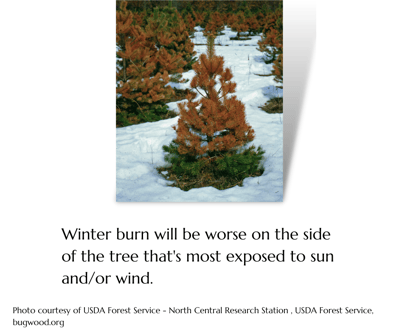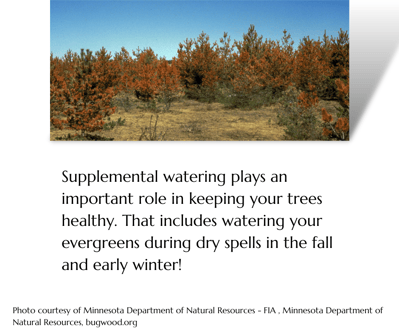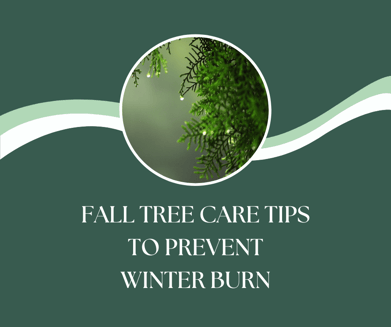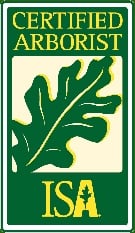One of the best things about evergreens is their ability to, well, stay green! Their vibrant leaves and needles keep your yard from looking like a barren wasteland in the winter.
The last thing you want is for a harsh, dry winter to damage your evergreens and turn that lovely green foliage brown, an injury otherwise known as winter burn.
Is there anything you can do in the fall to reduce the chances of winter burn harming the evergreens in your Charlotte, NC yard?
We're glad you asked!
This week, we're going over the things you can do in autumn to keep your evergreens healthy throughout the winter and into spring.
What is winter burn?
As you well know, evergreens keep most of their leaves or needles throughout the winter. That foliage remains active and continues performing its normal biological processes.
One of those processes is evapotranspiration, which is the normal loss of water through extremely small pore-like openings in the leaves called stomata.
This water loss usually isn't a problem for plants since it's replaced with moisture from the soil. But sometimes plants lose water too fast and/or can't get enough water from the soil. That's when winter burn sets in.
What does winter burn look like? You'll notice dry, brown foliage with damage starting at the tips or margins of the foliage. The worst of the damage is usually on the foliage with the most exposure to the sun and/or wind. In extreme cases, winter burn can cause foliage to brown up and die off completely.
There are certain conditions that can make your evergreen more susceptible to winter burn. Keep a special eye on your tree or shrub if:
- It's exposed on its south or southwest side to direct sun
- It's close to a radiant heat-retaining surface like brick or concrete
- It's overly exposed to the wind
- It's planted in dry soil with little organic matter or mulch
- It has struggled with drought, insect, or disease issues
- It has girdling roots, restricted roots, or roots that were planted to deeply, which can limit water uptake

Winter burn vs. typical foliage shedding
An evergreen with brown needles or leaves isn't always in trouble. In fact, it's normal for the foliage of your evergreens to turn brown and fall off.
Evergreens actually lose their foliage like deciduous trees do, just not as often and not all at once. Some evergreens shed old foliage every two years, or there may be several years between instances of shedding.
Here's the difference: If the foliage is turning brown in the interior of the tree but not the tips or margins, it's most likely the normal shedding of old foliage and your tree will be fine.
If the foliage is browning at the tips or margins, it may be winter burn or another more serious problem.
Preventing winter burn
Winter burn can be tricky to combat because you may not see the effects until the weather warms up in late winter or early spring.
That being said, there are a few things you can do to protect your evergreens from winter burn.
- Supplemental watering
Supplemental watering is one of the best things you can do to keep your trees and shrubs healthy. That includes watering throughout the summer and early fall dry periods. And if conditions are mild in late winter, water then as well!
Generally, if the temperature is above 40 degrees and it hasn't rained in a while, check to see if the soil around your evergreen is dry. If it is, water deeply. This is especially important for newly planted trees and shrubs that haven't had a chance to establish their roots yet.
If you're looking for some general watering tips, download our Tree Watering Guide for free right now! - Mulch
Mulch is a great for retaining soil moisture, so be sure to replenish the mulch around your evergreens often.
Want to learn more about the best way to install mulch? Read this next: How to Install Mulch Like a Professional - Wind barriers
If your evergreen tree or shrub is planted in a particularly windy area, putting up a wood slat, burlap, or canvas screen can help protect the tree from wind and sun exposure, preventing winter burn.

Can an evergreen come back from winter burn?
A bout of winter burn doesn't always mean the worse for your tree or shrub. Sometimes the damage is only limited to the current foliage and the buds may develop new healthy growth in the spring.
If you find yourself wondering if your evergreen's branches are truly dead, scratch a small area of the bark with your fingernail or a pocketknife to see if there's any green tissue underneath. If there is, wait a while and see if new growth develops.
Once the growing season starts and it becomes more obvious which branches are alive and which are dead, then you can prune out the damage.
Looking for a professional to inspect and prune your trees in Charlotte, NC? The experts at Carolina Tree Care are happy to help!
Request a consultation today to get started.
Like what you just read?
Then you'll love this: Why Fall is a Great Time to Plant a Tree








